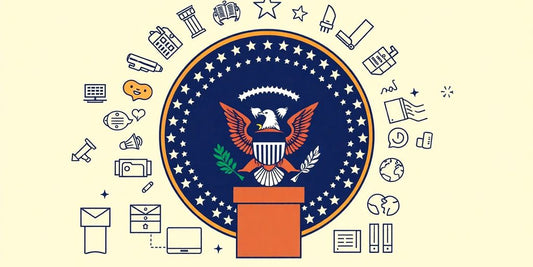
How to Write a Resume That Gets Interviews (2025 Guide)
ResumeProWorks Career ExpertWhether you're a first-time job seeker or a seasoned professional updating your materials, this guide will help you master resume writing with actionable tips, examples, and proven strategies.
We’ll cover:
🔹 Which resume format works best
🔹 What to include (and what to skip)
🔹 Tips for tailoring to specific jobs
🔹 A unique section to elevate your resume
🔹 Where to get powerful templates (Hint: here’s one of our faves)
Let’s dive in! 💼
📌 What is a Resume and Why Does It Matter?
A resume is a one- to two-page document summarizing your education, skills, experience, and achievements. But more importantly—it’s your first impression. In just 6-7 seconds, recruiters decide if they’ll keep reading.
So your resume must:
- Clearly show your value
- Match the job description
- Be well-formatted and mistake-free
- Be optimized for Applicant Tracking Systems (ATS)
🔗 Need a fast start? Browse these ready-to-go resume templates for every industry.
✍️ Step 1: Choose the Right Resume Format
There are 3 main resume formats. Each has a unique structure that serves different purposes:
🔹 1. Chronological Resume (Most Common)
This format highlights your work history, starting with the most recent job. Great for showing consistent progress in a single field.

Best for:
✅ Professionals with consistent work experience
✅ Job seekers staying in the same industry
🔹 2. Functional Resume (Skills-Based)
A functional resume emphasizes skills over job titles. It’s perfect if you’re changing careers or have gaps in your employment.

Best for:
✅ Career changers
✅ Those with limited work history
✅ Freelancers or creatives
🔹 3. Combination Resume (Hybrid)
This layout combines both skills and work history. It lets you spotlight your abilities and also shows where you used them.

Best for:
✅ Mid-level professionals with diverse skills
✅ Tech professionals, project managers
🔧 Try the Microsoft Word Resume Template for an editable version compatible with all three formats.
🧱 Step 2: Structure Your Resume Sections
While each format varies, the core sections of every great resume include:
📇 1. Contact Information
- Full name
- Phone number
- Email (professional!)
- LinkedIn profile or portfolio (optional)
🎯 2. Resume Summary or Career Objective
A punchy 2–3 sentence pitch explaining:
- Who you are professionally
- Key strengths
- What you’re looking for
Example (Summary):
“Results-driven marketing professional with 5+ years in digital campaigns and SEO. Increased web traffic by 60% in one year. Seeking to bring growth-focused strategies to a mid-size agency.”
Example (Objective):
“Recent finance graduate eager to join a growth-focused organization and contribute analytical and problem-solving skills in a junior analyst role.”
🛠️ 3. Key Skills
Group them into two types:

- Hard skills (teachable): Programming, data analysis, video editing
- Soft skills (interpersonal): Communication, leadership, problem-solving
🧑💼 4. Work Experience
For each role, include:
- Job Title
- Company name + location
- Dates of employment
- Bulleted achievements (use numbers!)
✅ Instead of saying:
“Responsible for customer service.”
✅ Say:
“Resolved 95% of customer issues within 24 hours, improving satisfaction scores by 30%.”
🎓 5. Education
Include:
- Degree or diploma
- School name
- Graduation date
- GPA (if recent or requested)
- Honors or relevant coursework (optional)
🏆 6. Certifications, Awards & Extras
Only add these if they support your job goal:
- Technical certifications (e.g., CompTIA, PMP)
- Languages
- Publications
- Personal projects (see next 👇)
🌟 Passion Projects & Portfolio Work
Most resumes end with education. But to truly stand out, add a section that shows self-motivation and creativity.
Why include it?
- Shows initiative outside of work
- Great for career changers or self-taught pros
- Perfect for creatives, coders, marketers
Examples:
- “Built a budgeting app with 1K+ downloads on Google Play.”
- “Founded a YouTube channel on Excel tutorials with 20K views.”
- “Designed 10 logos for nonprofits as a freelancer on Fiverr.”
🔥 Use a custom template that includes space for your side work!
🛠️ Step 3: Tailor Your Resume for Every Job
Generic resumes = missed opportunities.
Here’s how to customize quickly:
- Scan the job description
- Match keywords (skills, tools, responsibilities)
- Reorder bullets to emphasize relevant points
- Mirror the language used in the posting (e.g., “managed budgets” vs. “budget oversight”)
📎 Tip: Save different versions of your resume for different roles.
⚙️ Step 4: Make it ATS-Friendly
Many companies use Applicant Tracking Systems (ATS) to scan resumes. If yours isn't formatted right, it might never be seen.
✅ DO:
- Use clear headers (Work Experience, Education)
- Stick to standard fonts (Arial, Calibri, Times)
- Save as PDF or .docx
- Include keywords from the job listing
🚫 DON’T:
- Use images, graphics, or tables
- Put critical info in headers/footers
🚫 Common Resume Mistakes to Avoid
❌ Spelling errors (use Grammarly or a proofreader)
❌ Fluffy language like “hard worker” or “go-getter”
❌ Typos in job titles or dates
❌ Using the same resume for every job
✅ Final Checklist
Before sending, ask yourself:
- Is it 1–2 pages max?
- Are your top skills and achievements easy to find?
- Did you include numbers to show impact?
- Have you customized it to the role?
- Is it ATS-friendly?
🎁 Where to Get Pro Resume Templates
Don’t want to start from scratch? These pro-designed templates are:
- ATS-optimized ✅
- Easy to edit in Word ✅
- Designed by career experts ✅
🧰 Explore Resume Templates →
📝 Try the Microsoft Word Template →
✨ Conclusion: Your Resume = Your Future
Learning how to write a resume for a job isn’t just about formatting—it’s about building confidence, owning your accomplishments, and getting that YES.
With the right format, keywords, and design, you’ll stand out in a crowded field.
--------------------------------------------------
🧠 Frequently Asked Questions About How to Write a Resume
1. What is the best resume format for 2025?
The best resume format in 2025 is the chronological resume, especially for candidates with consistent work experience. However, if you’re changing industries or have employment gaps, the functional or combination resume formats may serve you better.
🧰 Need help choosing? View format visuals and templates here.
2. How long should a resume be?
Ideally:
1 page if you have less than 10 years of experience
2 pages if you have 10+ years or extensive accomplishments
Keep it concise, results-driven, and focused on what's most relevant to the job.
3. Should I use a resume template or design it myself?
Using a professionally designed resume template saves time and ensures formatting is clean, modern, and ATS-friendly. DIY resumes often lack polish or consistency.
🎯 Try the Microsoft Word Resume Template to make a strong first impression instantly.
4. What should I include in my resume summary or objective?
Include:
- Your job title or professional identity
- Years of experience
- 2–3 top skills or achievements
- What you're seeking next
📌 Example: “Detail-oriented accountant with 6+ years managing budgets and reducing overhead. Seeking to bring financial accuracy to a growing tech firm.”
5. What’s the difference between hard skills and soft skills?
Hard skills are technical abilities (e.g., programming, SEO, Excel).
Soft skills are interpersonal qualities (e.g., teamwork, leadership).
💡 You should balance both in your resume. Check out our Skills Infographic above for a handy visual reference.
6. Do I need to customize my resume for each job?
Yes—always. Customizing your resume by tailoring keywords, reordering accomplishments, and aligning with the job description dramatically improves your chances of passing ATS and impressing hiring managers.
✨ Pro tip: Save different versions for different roles to make quick edits later.
7. How do I make my resume ATS-friendly?
To pass applicant tracking systems:
- Avoid tables, graphics, or images
- Use standard section headers like “Work Experience”
- Stick to basic fonts like Arial or Calibri
- Save your file as PDF or .docx
🚫 Avoid fancy formatting that might confuse parsing systems.
8. What are some common resume mistakes to avoid?
- Typos and grammatical errors
- Using passive language or fluff like “hard worker”
- Not quantifying achievements
- Sending a generic resume to every job
- Including outdated or irrelevant experience
📎 Want an easy fix? Download a clean, pre-formatted resume template here.
9. Should I include a photo on my resume?
In most countries (like the U.S., U.K., and Canada), no photo is recommended to avoid unconscious bias. However, in parts of Europe or Asia, it might be customary.
Check regional preferences before including a photo.
10. How far back should my work history go?
Stick to the last 10–15 years unless earlier experience is highly relevant. Hiring managers care most about your recent and applicable achievements.
📌 You can summarize earlier jobs under a section like “Additional Work History.”
11. Can I include volunteer work or side projects?
Absolutely! If they’re relevant or showcase transferable skills, include them. For example:
“Built a nonprofit website on WordPress” → shows tech skills.
“Managed volunteers for a local food drive” → leadership.
💡 Add a unique section like “Passion Projects” to spotlight this experience.
12. Should I include references on my resume?
No need to list references or “references available upon request.” That’s assumed. Save space for accomplishments instead.
💬 You can provide references later in the interview process if requested.











